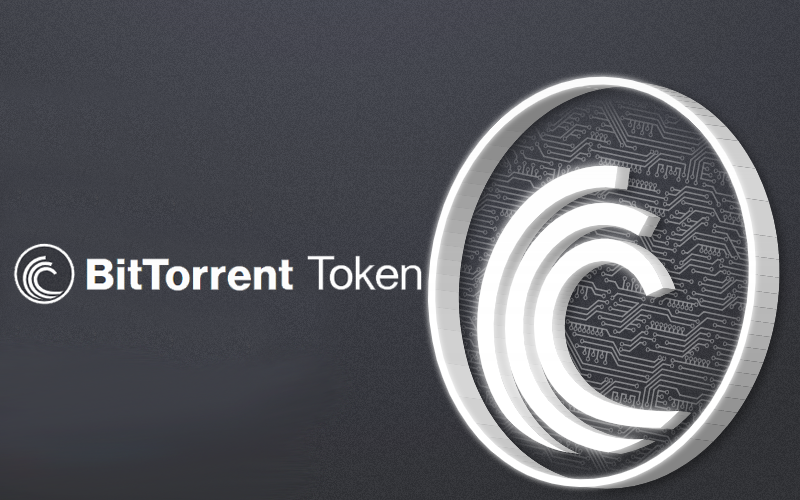Everyone should know about BitTorrent, one of the most popular technologies for the P2P distribution of large computer files. This protocol was released as far as back as 2001. In July 2018, TRON, a well-established blockchain company, acquired the firm behind BitTorrent.
In February 2019, TRON released the BitTorrent Token (BTT), a utility-rewarding cryptocurrency for the file-sharing protocol.
The combination of the two projects seemed perfect as they both embody decentralization. Since being released over two years ago, the coin has increased by an impressive 5072%, reaching an all-time high of $0.013 on 05 April 2021.
The cryptocurrency is the 37th most traded with a market cap of roughly $4.5 billion, according to CoinMarketCap. BTT is one of the exciting projects in the crypto space that is worth exploring further.
Beginnings
As briefly mentioned, we can trace back the existence of BTT to the formation of the BitTorrent file-sharing protocol that officially launched in 2001. The private company facilitating the service, BitTorrent Inc., was established in 2004.
The technology is the brainchild of well-known computer programmer Bram Cohen. The American created the protocol after being frustrated with the slow file transfer protocols that existed at the time.
For this reason, BitTorrent has been the go-to torrenting service ever since, claiming well over 100 million users globally.
In July 2018, the TRON Foundation, the organization behind the development of the TRON blockchain, purchased BitTorrent Inc for a reported $120 million. Initially, some users had concerns they would now have to pay with cryptocurrencies for using BitTorrent.
Fortunately, TRON’s acquisition occurred in the hopes of enhancing BitTorrent’s ecosystem by leveraging its existing large user base with blockchain technology.
Like most cryptocurrencies, the token had an ICO (initial coin offering) a month before launch in January 2019, raising a reported $7.2 million at $0.00012 per token on Binance’s Launchpad program. Roughly 60 billion BTT were sold at this time.
How does the BitTorrent Token work?
BTT is a TRC-10 utility token, which is essentially the technical standard for coins developers create using TRON’s blockchain. So, how does it all work?
Currently, BTT is available on BitTorrent’s upgraded version known as BitTorrent Speed, where users on this platform will have a dedicated crypto wallet for receiving and sending the token.
As the program’s name suggests, BitTorrent Speed is all about even faster torrent downloads than before, only now there is a reward system with BTT. The platform automatically bids the token to other users who will provide faster speeds to downloaders.
Therefore, the purpose of BTT is to reward ‘seeders,’ the users who upload the files onto their client. The longer someone seeds, the more rewards they can receive, enabling much faster download speeds for the whole community.
On its own, BTT is available for purchase and trade at numerous exchanges such as Binance, OKEx, Bitfinex, Bithumb, Huobi, HitBTC, and so on.
BitTorrent Token’s ledger and supply
As a TRC-10 standard, TRON’s delegated proof-of-stake blockchain is responsible for securing BTT. According to the project’s whitepaper, there is no mining involved in creating BTT as 990 billion tokens were already ‘pre-minted’ before launch.
The distributed 60 billion BTT during the ICO consists of private, public, and seed sales, equating to 17% of the total supply. 20.1% of this entire figure accounts for the TRON Foundation’s monthly airdrops since February 2019.
A user with any TRON wallet is eligible to receive free BTT every month until February 2025. 19%, 20%, 19.9%, and 4% of the supply was reserved for the BitTorrent Foundation, the TRON Foundation, the BitTorrent ecosystem itself, and partnership activities, respectively.
At the time of writing, the present circulation is 659.9 billion coins.
What makes the BitTorrent Token valuable?
If we look at the slogan of the BitTorrent Token, ‘tokenizing the world’s largest decentralized file-sharing protocol with BTT,’ we can see the purpose of this coin. Prior to BTT, there were no incentives for users to enable speedier downloads of files on BitTorrent.
Thus, BTT is a mechanism of tokenizing the ecosystem through rewarding seeding. Downloaders spend the tokens to get their files faster; ‘seeders’ receive these rewards for seeding those files.
Another point worth mentioning is BTT stands between two already highly successful ventures in BitTorrent and TRON. Therefore, its success and potential value lie in how people adopt either project.
Both concepts embody the spirit of decentralization. BitTorrent has successfully proven how it is better than centralized file-sharing protocols with a single point of failure, slower performance, higher costs, and low fault tolerance.
Similarly, TRON’s blockchain of cryptocurrencies, most notably TRX, also incorporates similar themes; cutting out the middleman, having a digital medium of exchange existing in a peer-to-peer structure, low fees, and quick-performing transactions.
It is mainly these elements that make the BitTorrent Token a project with clear investment value for just about any investor.
Final word
This article should have hopefully shown why BTT is a unique cryptocurrency and one of the well-known ones in the growing list of utility-rewarding tokens already in existence. Naturally, the user base of BitTorrent itself should start growing once people start learning about its native token.
Additionally, BTT will soon be introduced to the popular American video live streaming platform, DLive, also owned by TRON, where it will act as a reward system similar to how it is on BitTorrent.
Overall, things are looking good for the BitTorrent Token.
